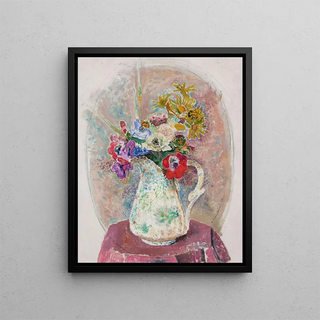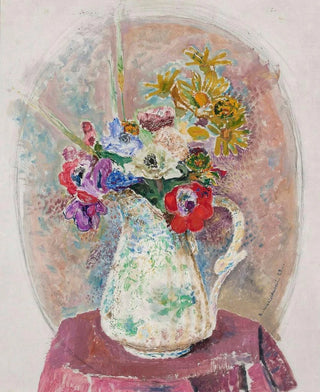Art print | Anémones - Zygmunt Waliszewski


View from behind

Frame (optional)
Anemone Art print - Zygmunt Waliszewski – Captivating introduction
In the vast panorama of art history, some works manage to capture the very essence of nature's fleeting beauty. "Anemone - Zygmunt Waliszewski" is undoubtedly one of these creations that awakens the senses and invites delicate contemplation. The canvas, rich in colors and emotions, transports us to a universe where the fragility of flowers intertwines with the strength of artistic expression. Immersing oneself in this piece, the observer is immediately struck by the depth of feelings it evokes, thus revealing the undeniable talent of its creator.
Style and uniqueness of the work
Waliszewski's work stands out with a style that is both realistic and impressionist, where light plays a fundamental role. The anemones, delicate and vibrant, seem to dance across the canvas, capturing light in an almost magical way. Shades of blue, violet, and pink blend harmoniously, creating a lively tableau that evokes the softness of a spring day. Each petal is rendered with meticulous detail, demonstrating a keen eye for the plant world. The composition, though seemingly simple, reveals an underlying complexity, inviting the viewer to explore every corner of the piece. This ability to marry simplicity and depth makes "Anemone" an iconic work that transcends time.
The artist and his influence
Zygmunt Waliszewski, Polish artist of the early 20th century, established himself in the art world thanks to his unique vision and innovative approach. Influenced by naturalist and impressionist currents, he developed a style that is entirely his own, combining meticulous observation with personal interpretation. Waliszewski often explored themes of nature, seeking to capture not only its beauty but also its transient essence. His work is marked by a sensitivity that resonates with human emotions, making each painting an invitation to reflection. Through his creations, he has inspired many contemporary artists, leaving an indelible mark on the artistic scene.

Matte finish

View from behind

Frame (optional)
Anemone Art print - Zygmunt Waliszewski – Captivating introduction
In the vast panorama of art history, some works manage to capture the very essence of nature's fleeting beauty. "Anemone - Zygmunt Waliszewski" is undoubtedly one of these creations that awakens the senses and invites delicate contemplation. The canvas, rich in colors and emotions, transports us to a universe where the fragility of flowers intertwines with the strength of artistic expression. Immersing oneself in this piece, the observer is immediately struck by the depth of feelings it evokes, thus revealing the undeniable talent of its creator.
Style and uniqueness of the work
Waliszewski's work stands out with a style that is both realistic and impressionist, where light plays a fundamental role. The anemones, delicate and vibrant, seem to dance across the canvas, capturing light in an almost magical way. Shades of blue, violet, and pink blend harmoniously, creating a lively tableau that evokes the softness of a spring day. Each petal is rendered with meticulous detail, demonstrating a keen eye for the plant world. The composition, though seemingly simple, reveals an underlying complexity, inviting the viewer to explore every corner of the piece. This ability to marry simplicity and depth makes "Anemone" an iconic work that transcends time.
The artist and his influence
Zygmunt Waliszewski, Polish artist of the early 20th century, established himself in the art world thanks to his unique vision and innovative approach. Influenced by naturalist and impressionist currents, he developed a style that is entirely his own, combining meticulous observation with personal interpretation. Waliszewski often explored themes of nature, seeking to capture not only its beauty but also its transient essence. His work is marked by a sensitivity that resonates with human emotions, making each painting an invitation to reflection. Through his creations, he has inspired many contemporary artists, leaving an indelible mark on the artistic scene.






